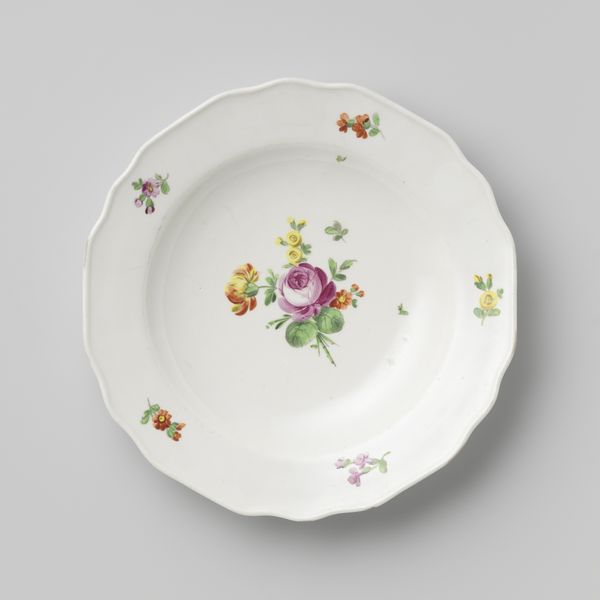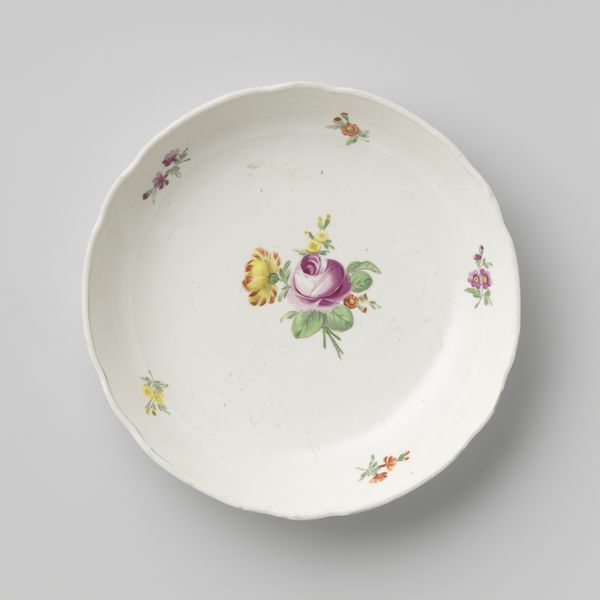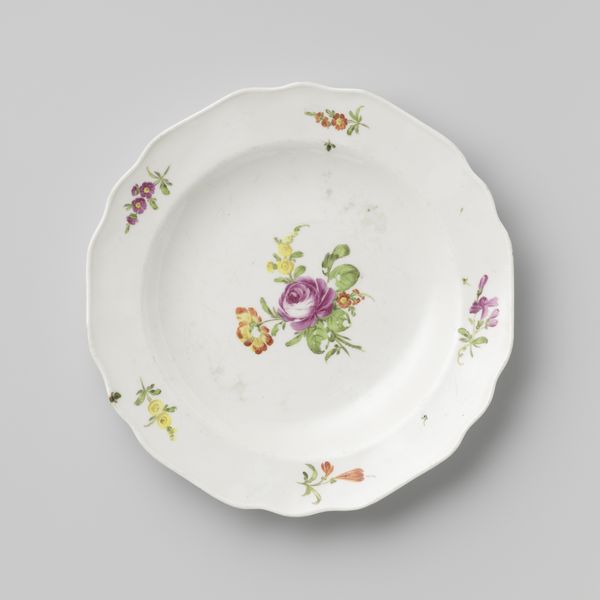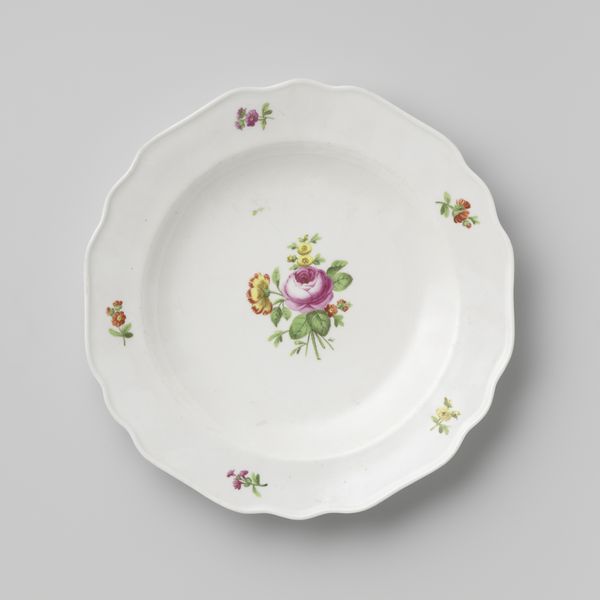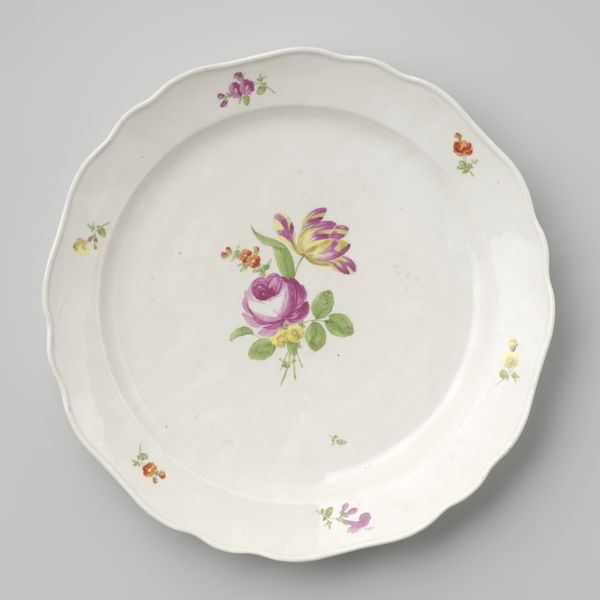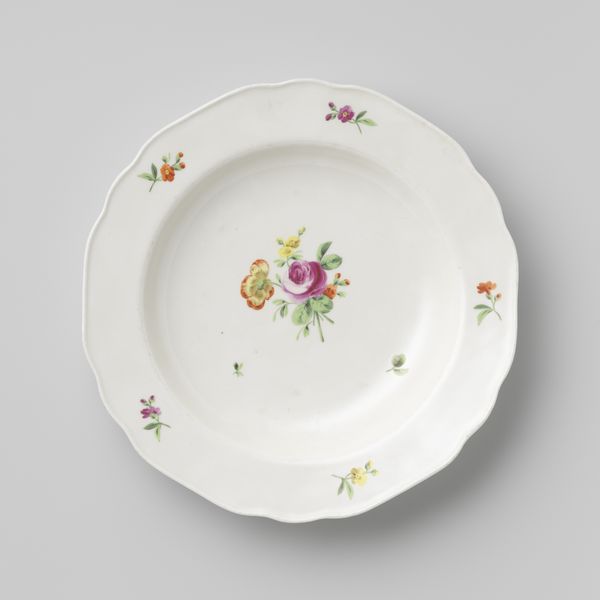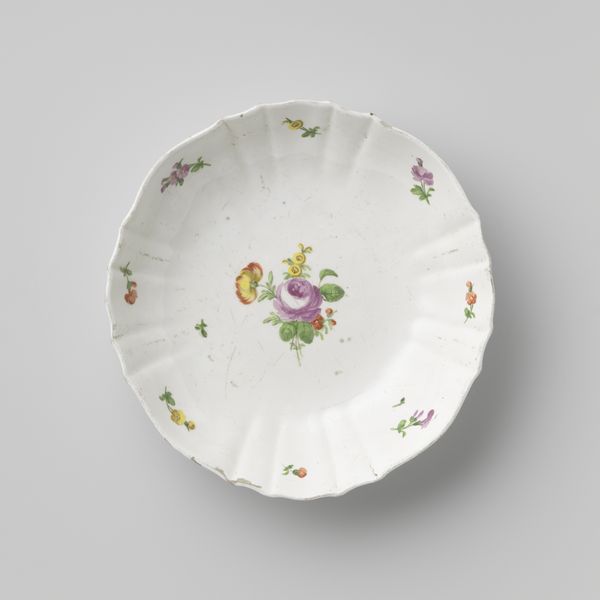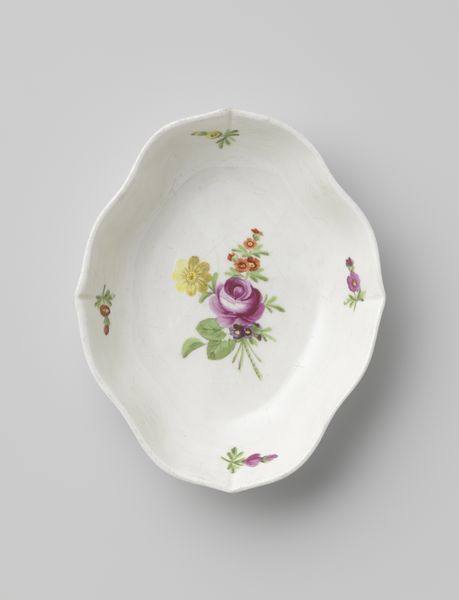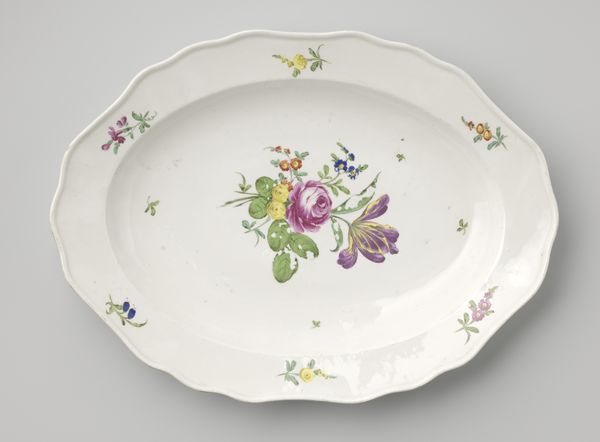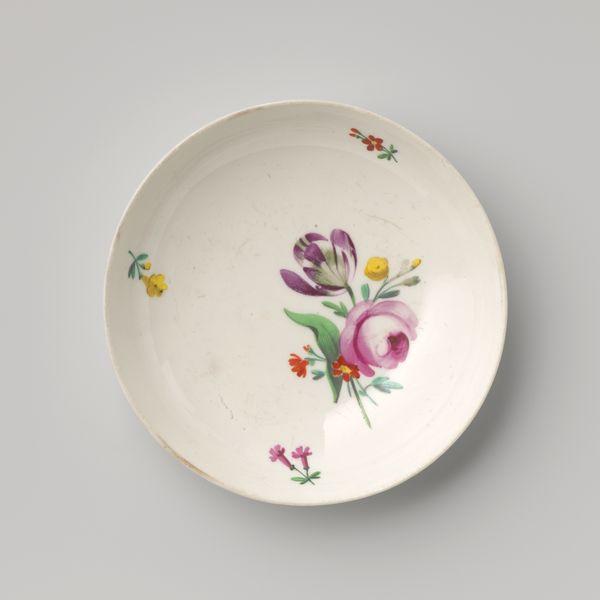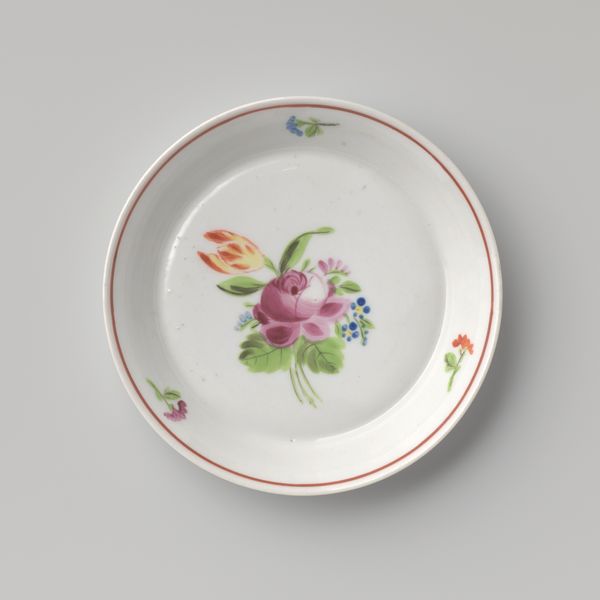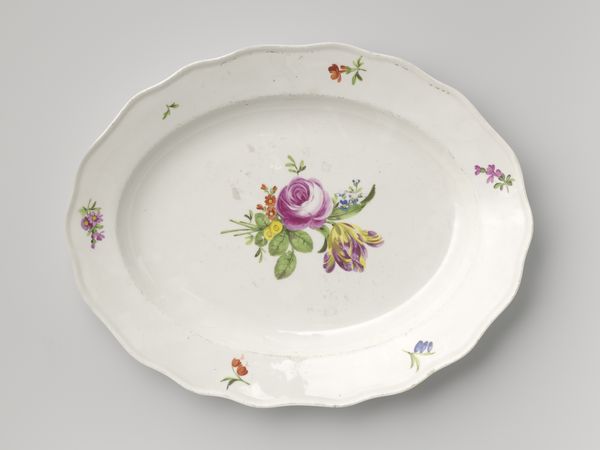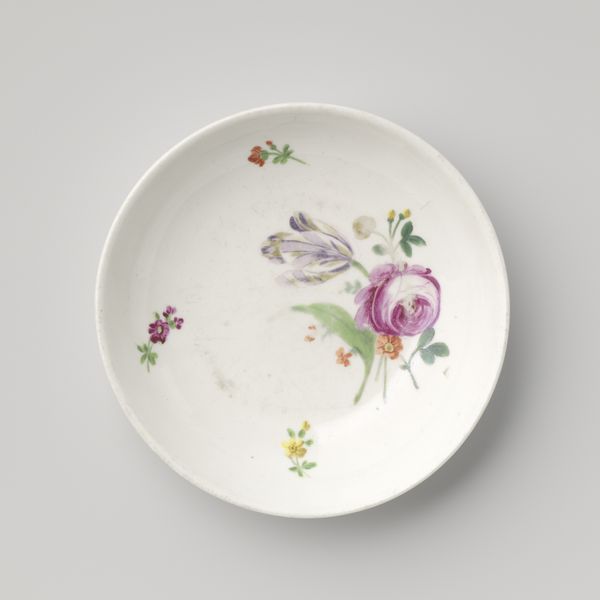
Dimensions: height 3.4 cm, diameter 25.1 cm, diameter 12.7 cm
Copyright: Rijks Museum: Open Domain
Curator: Here we have an 18th or 19th-century porcelain plate produced by the Kaiserliche Porzellanmanufaktur, decorated with hand-painted floral motifs. The main floral arrangement sits at the center, with scattered smaller bouquets and individual sprays along the scalloped edge. Editor: My first impression is one of restrained elegance, almost fragile. The delicate flowers and pale palette evoke a sense of bygone aristocratic privilege but there’s an element of wistfulness too. The scattered sprays of floral motifs hint at an absence—or a rupture with older aristocratic privilege. Curator: Indeed. Porcelain production at this time involved complex labor systems—from mining the raw materials to the artistry of painting. The finished object was then consumed as part of elaborate social rituals, reinforcing status through ownership and display. Each delicate stroke, each firing, involved considerable human effort. Editor: Right, the surface ornamentation acts almost like a political canvas. Consider that floral motifs had symbolic and social meanings that were not merely decorative. They also served to uphold and reflect dominant cultural narratives and social norms—but can also offer critiques of prevailing views regarding taste, beauty, or access, in the face of changing politics. Curator: I agree that, while beautiful, the seemingly innocuous nature of the floral decoration shouldn’t blind us to the material and social relationships that made its production and circulation possible. This was not simply "art for art’s sake;" each object played a role in maintaining social structures, representing a whole chain of labor and skill. The ceramic's journey, from raw clay to finely decorated object, involves very specific techniques with porcelain which has historically been seen as a very luxurious good due to its difficult manufacturing process. Editor: What does this plate whisper to us about changing gender roles within artistic professions during this period of enormous upheaval, in European cultural attitudes? The presence of floral elements points to the cultural emphasis on domesticity, beauty and delicacy which was very much tied to the societal perception of women. Who had access to producing and consuming goods such as this plate? These seemingly innocuous objects and gestures helped maintain highly exclusive social classes. Curator: Precisely. So much is wrapped up within what appears to be a simple, pretty object. It makes you wonder what narratives it could tell, if only it could speak of the lives it has seen and touched. Editor: Absolutely. Hopefully, it gives us the necessary prompts to rethink what "art" meant and for whom at a specific moment in history.
Comments
No comments
Be the first to comment and join the conversation on the ultimate creative platform.
